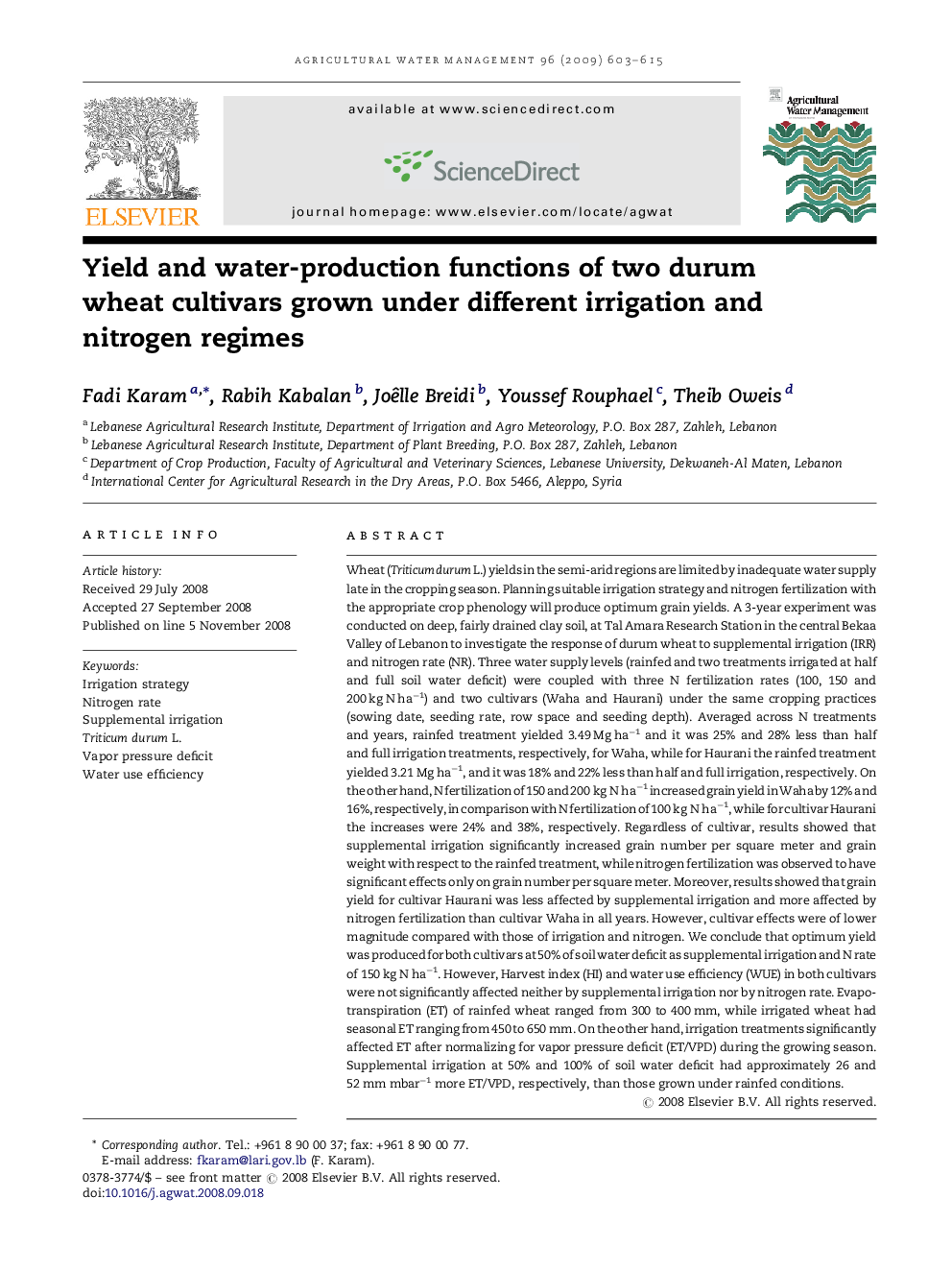| Article ID | Journal | Published Year | Pages | File Type |
|---|---|---|---|---|
| 4480250 | Agricultural Water Management | 2009 | 13 Pages |
Wheat (Triticum durum L.) yields in the semi-arid regions are limited by inadequate water supply late in the cropping season. Planning suitable irrigation strategy and nitrogen fertilization with the appropriate crop phenology will produce optimum grain yields. A 3-year experiment was conducted on deep, fairly drained clay soil, at Tal Amara Research Station in the central Bekaa Valley of Lebanon to investigate the response of durum wheat to supplemental irrigation (IRR) and nitrogen rate (NR). Three water supply levels (rainfed and two treatments irrigated at half and full soil water deficit) were coupled with three N fertilization rates (100, 150 and 200 kg N ha−1) and two cultivars (Waha and Haurani) under the same cropping practices (sowing date, seeding rate, row space and seeding depth). Averaged across N treatments and years, rainfed treatment yielded 3.49 Mg ha−1 and it was 25% and 28% less than half and full irrigation treatments, respectively, for Waha, while for Haurani the rainfed treatment yielded 3.21 Mg ha−1, and it was 18% and 22% less than half and full irrigation, respectively. On the other hand, N fertilization of 150 and 200 kg N ha−1 increased grain yield in Waha by 12% and 16%, respectively, in comparison with N fertilization of 100 kg N ha−1, while for cultivar Haurani the increases were 24% and 38%, respectively. Regardless of cultivar, results showed that supplemental irrigation significantly increased grain number per square meter and grain weight with respect to the rainfed treatment, while nitrogen fertilization was observed to have significant effects only on grain number per square meter. Moreover, results showed that grain yield for cultivar Haurani was less affected by supplemental irrigation and more affected by nitrogen fertilization than cultivar Waha in all years. However, cultivar effects were of lower magnitude compared with those of irrigation and nitrogen. We conclude that optimum yield was produced for both cultivars at 50% of soil water deficit as supplemental irrigation and N rate of 150 kg N ha−1. However, Harvest index (HI) and water use efficiency (WUE) in both cultivars were not significantly affected neither by supplemental irrigation nor by nitrogen rate. Evapotranspiration (ET) of rainfed wheat ranged from 300 to 400 mm, while irrigated wheat had seasonal ET ranging from 450 to 650 mm. On the other hand, irrigation treatments significantly affected ET after normalizing for vapor pressure deficit (ET/VPD) during the growing season. Supplemental irrigation at 50% and 100% of soil water deficit had approximately 26 and 52 mm mbar−1 more ET/VPD, respectively, than those grown under rainfed conditions.
